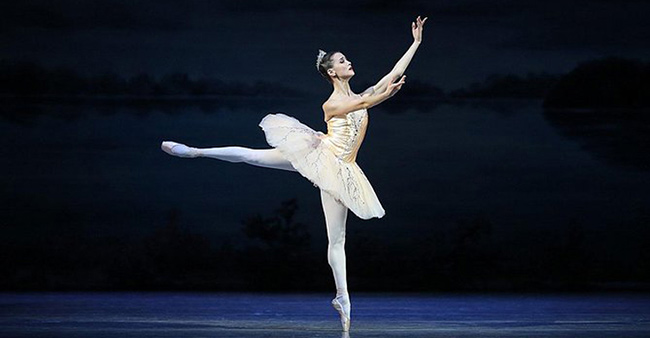Ballet Dance and Classical Music
Ballet dance and classical music—these two artistic mediums are unique treasures of the world’s cultural heritage. They are not merely forms of art or entertainment, but deep reflections of society, culture, and history. Both ballet and classical music embody discipline, beauty, and pure self-expression, having evolved over centuries into the forms we see today.
Ballet is an integrated art form combining dance and choreographic technique. In ballet, dance, mime, acting, and music (both vocal and instrumental) merge to create a work of art. Ballet may be performed independently or as part of an opera. The art form features an exquisite harmony between remarkable physical skill and music—especially in the unmatched precision of footwork.
Ballet: The Artistic Form of Silent Language
Origin of Ballet
Ballet began in 15th-century Italy, particularly in royal courts, where it developed as a form of courtly entertainment. It later entered France and flourished under the patronage of King Louis XIV. During his reign, the Académie Royale de Danse was established, and ballet gradually became an institutionalized art form.
In Western history, it is noted that Domenico da Piacenza (1390–1470) first used the term ballo instead of “dance” in his baletti or balli, from which the word “ballet” is derived. The first true ballet performance took place in 1581—Ballet Comique de la Reine by Balthasar de Beaujoyeulx. In the same year, Fabritio Caroso published a technical manual on ballet titled Il Ballarino.
Characteristics of Ballet
Ballet is a highly structured form of dance in which every gesture, pose, and step follows precise rules. It is primarily built on five basic positions, from which all other movements are derived. Performances are often presented in a special costume called a tutu. Ballet students train rigorously for years to achieve the required mastery.
Types of Ballet
Classical Ballet
The oldest and most structured form. Famous examples include The Nutcracker, Swan Lake, and The Sleeping Beauty.
Neoclassical Ballet
Emerged in the 20th century, preserving classical structure but incorporating different staging styles, shorter costumes, and varied music. George Balanchine was a leading figure in this movement.
Contemporary Ballet
A more free and creative form that emphasizes body movement and expression over rigid structure.
The Spiritual Side of Ballet
Ballet is not only a physical discipline but also a medium of self-presentation. A ballet dancer expresses emotions or tells a story through the body, with facial expressions and precise movements elevating the performance to artistic excellence.
Classical Music: The Spiritual and Philosophical Pursuit of Sound
Introduction to Classical Music
Classical music refers to musical traditions performed according to established rules of melody, rhythm, and form. It exists in various forms in Indian, Persian, European, and Chinese cultures. Here, we focus primarily on Indian and European classical music.
Indian Classical Music
Origins and Tradition
Indian classical music has a history of over 2,000 years. It is divided into two major traditions—Hindustani (North Indian) and Carnatic (South Indian). Ancient music treatises such as the Natya Shastra and Sangeet Ratnakar describe its theoretical foundations.
Raga and Tala
A raga is a melodic framework defined by specific notes, rules of ascent and descent, and associated emotions or rasas (love, separation, devotion, etc.). Tala refers to rhythmic cycles, such as teental (16 beats), ektal (12 beats), and jhaptal (10 beats).
Instruments and Styles
Flute, sarod, sitar, tabla, and tanpura are commonly used in Indian classical music. Different vocal forms include dhrupad, khayal, thumri, and tappa.
European Classical Music
History and Structure
Western classical music began in the Middle Ages as church music. It evolved through the Renaissance, Baroque, Classical, Romantic, and Modern periods. Renowned composers include Bach, Mozart, Beethoven, and Chopin.
Symphony, Sonata, Concerto
A symphony is written for a large orchestra.
A sonata is composed for one or two instruments.
A concerto features a solo instrument accompanied by an orchestra.
Instruments
Violin, piano, cello, clarinet, and horn are central to Western classical performances, each contributing its own role to create musical harmony on stage. Common Ground Between Ballet and Classical Music.
Discipline and Training
Both demand rigorous practice, patience, and dedication.
Spirituality
In both arts, the performer expresses the soul—through movement in ballet and through sound in classical music.
Storytelling and Themes
Both often draw from history, mythology, or philosophical ideas.
Ballet and classical music are profound, tradition-rich art forms that expand the mind, soothe the soul, and transform human emotions into art. Even in today’s technology-driven world, they help connect people to history, culture, and the essence of the human spirit. Preserving, practicing, and promoting these art forms globally is essential.
References:
The Ballet Companion, Eliza Gaynor Minden
Sangeet Ratnakar, Sharangadeva
Oxford History of Western Music
Indian Music Theory (Ravi Shankar)
Encyclopaedia Britannica

